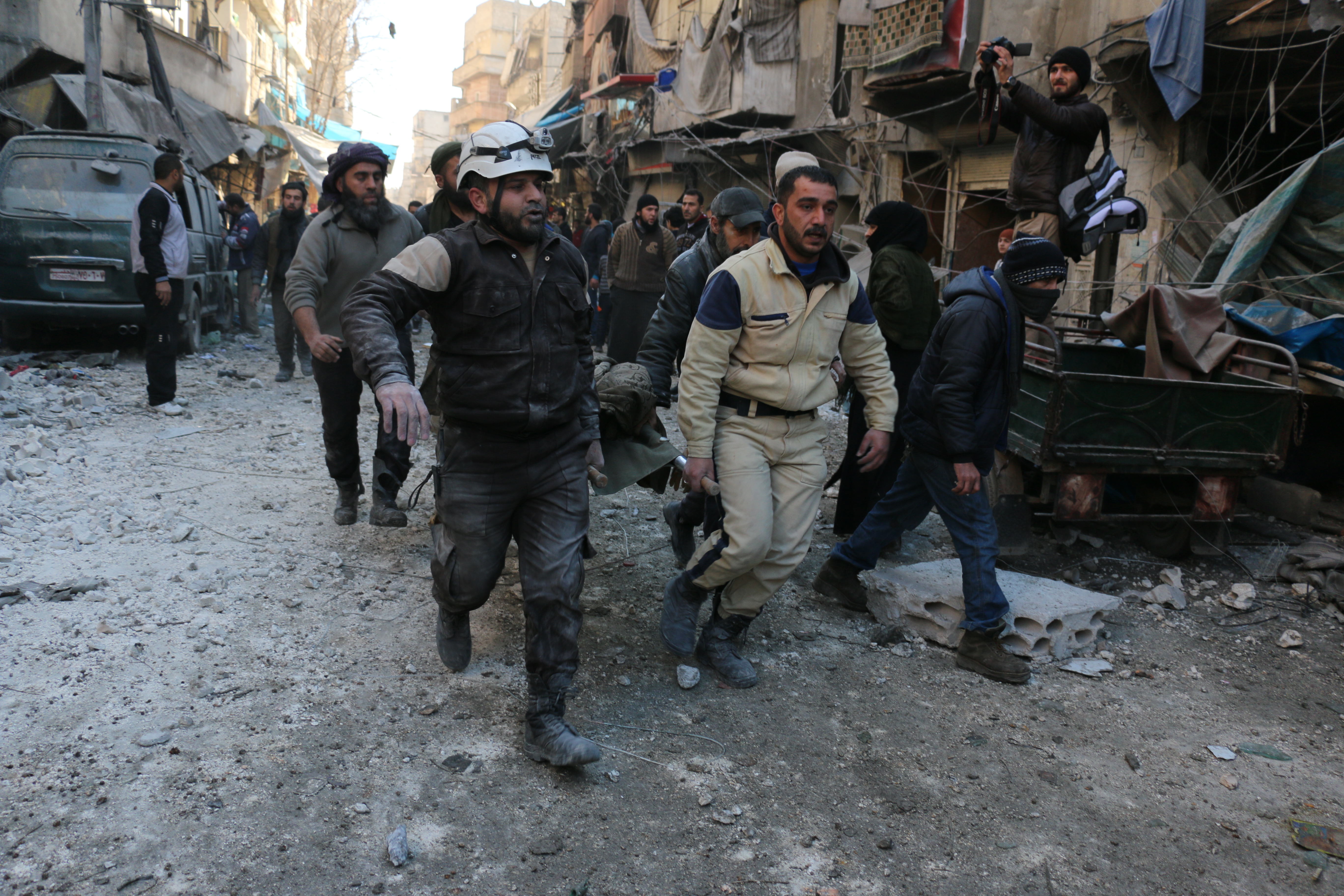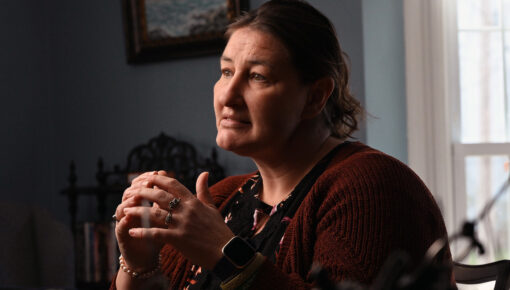A Staggering New Death Toll for Syria’s War — 470,000

Mourners carry the body of a Syrian man following an airstrike by government forces in Aleppo on Jan. 16, 2016. (Photo by Ameer Alhalbi/NurPhoto)
More than 1 in 10 Syrians have been wounded or killed since the beginning of the war in 2011, according to a new report that finds a staggering 470,000 deaths have been caused by the conflict, either directly or indirectly.
The grim tally from the Syrian Center for Policy Research (SCPR) represents a dramatic increase from the total of 250,000 fatalities often cited by the United Nations, which stopped independently counting Syria’s war dead early in 2014.
In all, 11.5 percent of Syria’s population has been wounded or killed since 2011, according to the SCPR analysis. The vast majority of deaths — 400,000 — were caused by violence, while 70,000 came as an indirect result of the war — the collapse of the country’s health-care infrastructure, lack of access to medicine, poor sanitation, the spread of communicable diseases, falling vaccination rates, food scarcity and malnutrition. Another 1.88 million Syrians have been injured.
The loss of life was the “most catastrophic visible and direct” impact of the war, according to the report, with life expectancy dropping from 70.5 years in 2010 to an estimated 55.4 years in 2015.
“Hundreds of thousands of people, particularly male breadwinners, have [been] killed, injured, arrested, and kidnapped, enormously endangering their lives and the living conditions of their families,” the report said. “The widespread insecurity and unbearable economic conditions and hardship, have forced millions of Syrians to resettle inside or outside the country and to depend completely on local and international humanitarian aids. This loss of security in all its forms has compromised human rights and dignity of the Syrian population.”
The report’s author, Rabie Nasser, told The Guardian that indirect deaths would only increase in the future. “We are sure of this figure,” Nasser said, noting that earlier counts from the U.N. likely “underestimated the casualties due to lack of access to information during the crisis.” Research for the SCPR study was carried out on the ground in Syria, according to The Guardian, which first reported the figures.
The SCPR analysis comes as bombing by the Syrian government and Russia of rebel-held Aleppo, the nation’s second largest city, has prompted a new exodus of tens of thousands of Syrians. The International Committee of the Red Cross estimates that the latest fighting has displaced 50,000 Syrians in Aleppo province, with around 30,000 gathering near Syria’s border with Turkey, which remains closed. Those who remain in Aleppo face a potential siege as forces allied with President Bashar al Assad slowly encircle the area.
In the meantime, diplomacy has been faltering. Earlier this month, international talks aimed at ending the war barely got off the ground in Geneva before they were suspended. The prospect for further negotiations appear dim despite plans to resume them on Feb. 25.
While not apportioning blame to either side in the conflict, the SCPR noted that fighting has destroyed Syria’s health-care infrastructure, while sieges and the restriction of movement have worsened the health of those with chronic illnesses. Physicians for Human Rights, a group that tracks the deaths of health-care workers in Syria, said in separate research released last December that 2015 was one of the worst years on record for strikes on medical facilities in the country, with government forces launching more than 100 attacks. Since March 2011, the human rights group has recorded 336 attacks on medical facilities and the deaths of 697 medical personnel — a vast majority of which it attributes to the government and its allies. In Aleppo, Physicians for Human Rights estimates that 95 percent of doctors have either fled, been detained or killed. Those who are still there struggle with shortages of supplies and equipment, and live under the near-constant threat of bombings.
The SCPR also looked at the economic and social impact of the war, placing Syria’s total economic loss by the end of 2015 at an estimated $254.7 billion. More than 85 percent of the country is living in poverty, with close to 7 in 10 Syrians stuck in extreme poverty — unable to afford essentials like food or water. At the start of the war in 2011, joblessness stood at 14.9 percent. By the end of last year, it surged to 52.9 percent.





